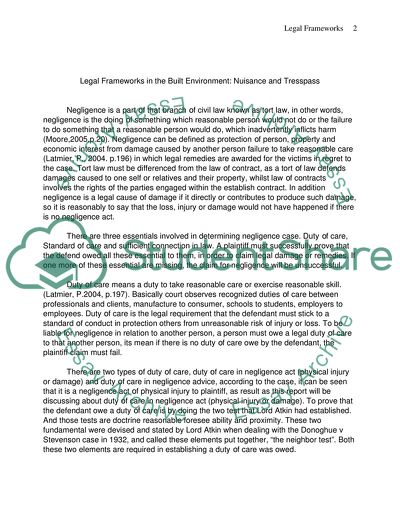Cite this document
(Legal Frameworks in the Built Environment: Nuisance and Trespass Report Example | Topics and Well Written Essays - 2000 words, n.d.)
Legal Frameworks in the Built Environment: Nuisance and Trespass Report Example | Topics and Well Written Essays - 2000 words. https://studentshare.org/law/1545377-legal-frameworks-in-the-built-environment-nuisance-and-tresspass
Legal Frameworks in the Built Environment: Nuisance and Trespass Report Example | Topics and Well Written Essays - 2000 words. https://studentshare.org/law/1545377-legal-frameworks-in-the-built-environment-nuisance-and-tresspass
(Legal Frameworks in the Built Environment: Nuisance and Trespass Report Example | Topics and Well Written Essays - 2000 Words)
Legal Frameworks in the Built Environment: Nuisance and Trespass Report Example | Topics and Well Written Essays - 2000 Words. https://studentshare.org/law/1545377-legal-frameworks-in-the-built-environment-nuisance-and-tresspass.
Legal Frameworks in the Built Environment: Nuisance and Trespass Report Example | Topics and Well Written Essays - 2000 Words. https://studentshare.org/law/1545377-legal-frameworks-in-the-built-environment-nuisance-and-tresspass.
“Legal Frameworks in the Built Environment: Nuisance and Trespass Report Example | Topics and Well Written Essays - 2000 Words”. https://studentshare.org/law/1545377-legal-frameworks-in-the-built-environment-nuisance-and-tresspass.


